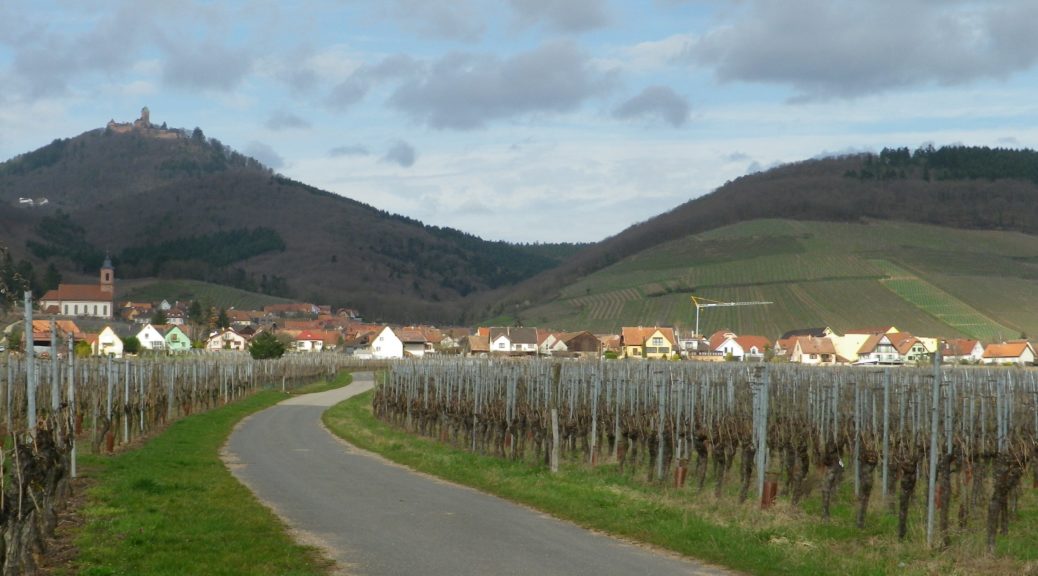Selestat, an important town for centuries throughout the Middle Ages, has numerous attractions for visitors, both viticultural and historical. The Velo Route du Vignoble d’Alsace (the Alsace Vineyard Bike Trail) first brought me here. (See the Nutshell). The trail’s northern half is somewhat hilly. So, by the time I got to the villages in the foothills just outside Selestat, between Dambach-la-Ville’s Grand Cru Frankstein vineyard and Kintzheim’s Grand Cru Praelatenberg vineyard, I was delighted with the flat stretch through vineyards overlooked by castle-topped mountains. I decided then to return to hike the area someday.
After years of remodeling, Selestat’s Bibliotheque Humaniste (Humanist Library) finally reopened, and I began researching local wine-themed trails. I first found the Vignoble de Selestat trail. (Online, the Circuit de Piemont and the Circuit du Vignoble refer to the same itinerary.) So, after visiting the library in the morning to see Merovingian and Carolingian manuscripts, I headed a mile away to the trailhead in Chatenois.
The trailhead lies close to the junction of the two major routes. During the earlier bike ride, a glance explained why five castles are in this area. The Giessen River had carved a wide valley through the mountains, which creates an east-west route through the mountains. Meanwhile, a major north-south route went along the hills at the foot of the mountains. The Ramstein and Ortenbourg castles outside Dambach and Scherwiller had good views over the valley route and the plains, and the Kintzheim and Haut Koenigsbourg castles further south had amazing views of the plains.
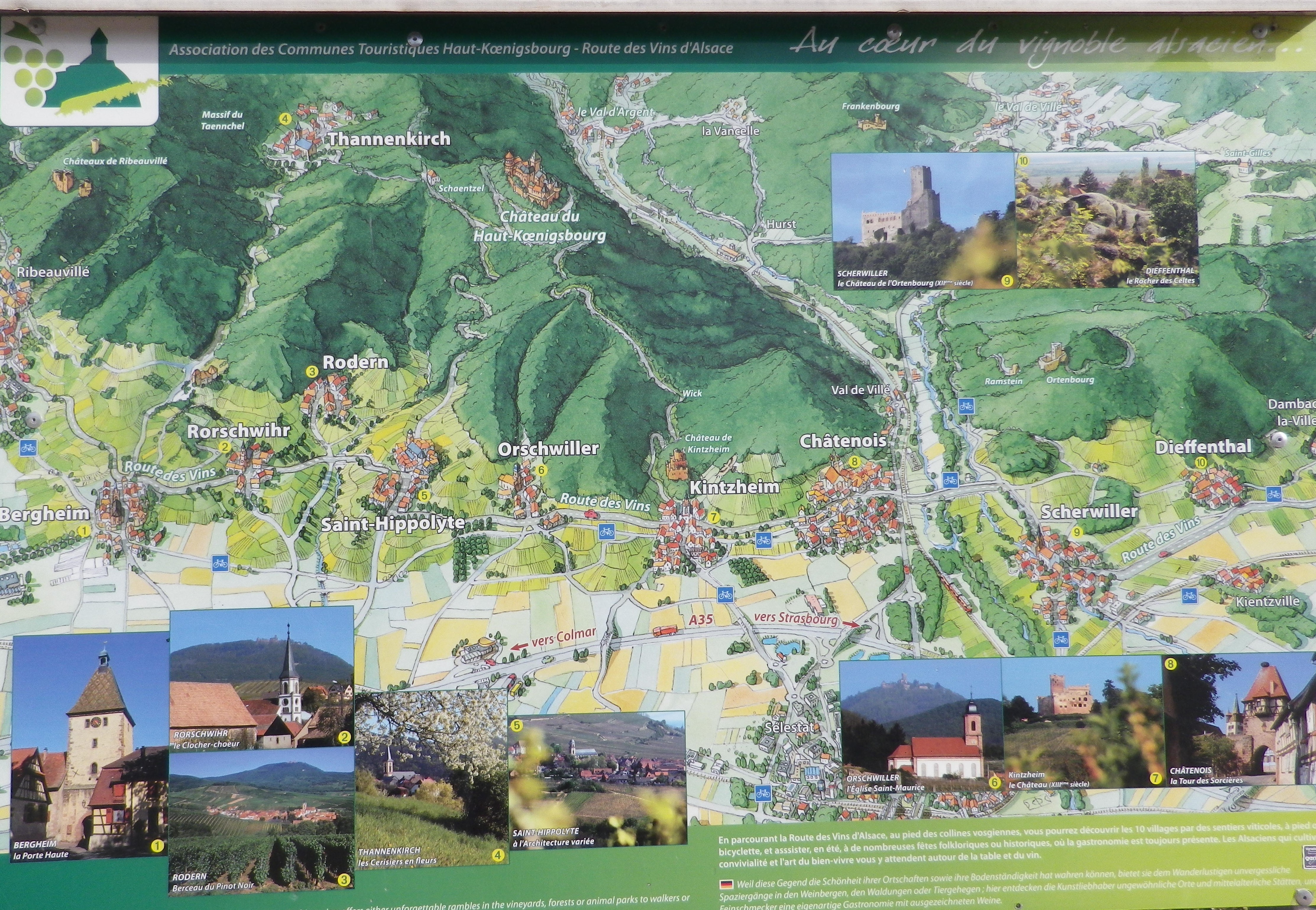
Chatenois lies hard by the intersection of both routes. Its castle, on flat land by contrast, provided defense for the villagers who undoubtedly served warlords in the hilltop castles. The imposing Sorcerers’ Tower is only a block from the trailhead. It marks the only access to a now mostly ruined fortified complex, which included high double encircling walls, multiple towers and a seigneurial residence – a small castle. Separated by a wall within the walls, was an episcopal residence and church with medieval foundations, and a very impressive Renaissance-era bell tower. I explored the remains of the complex, ending at the church apse, outside the encircling walls.
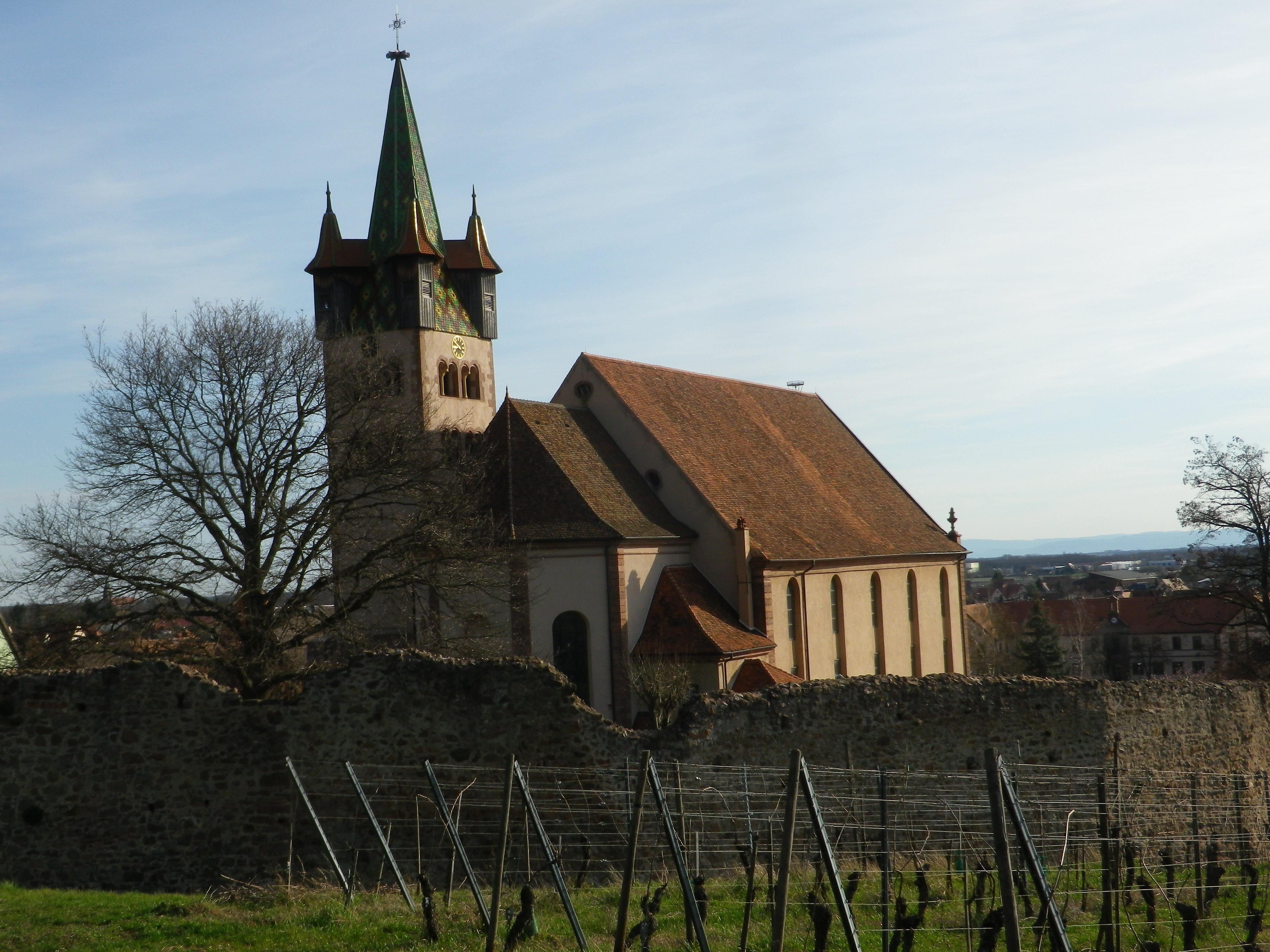
By this time, I was in the vineyards. There I noted that this trail itinerary (the Circuit de Piemont) also doubles as one for mountain (or hybrid) bikes the Circuit du Vignoble. The trail signage is different. (Usually where the hiking signage was absent, biking signage was present, or vice versus.) I followed the hiking signage, and soon Kintzheim came into view. Here, the trail enters the vineyards of the Grand Cru Praelatenberg, just below the Castle Kintzheim. Prelates refer to church officials, and where there are church officials sufficiently powerful or numerous, there are vineyards. In this case, like Frankstein in nearby Dambach, a good vineyard area produces quality wines.
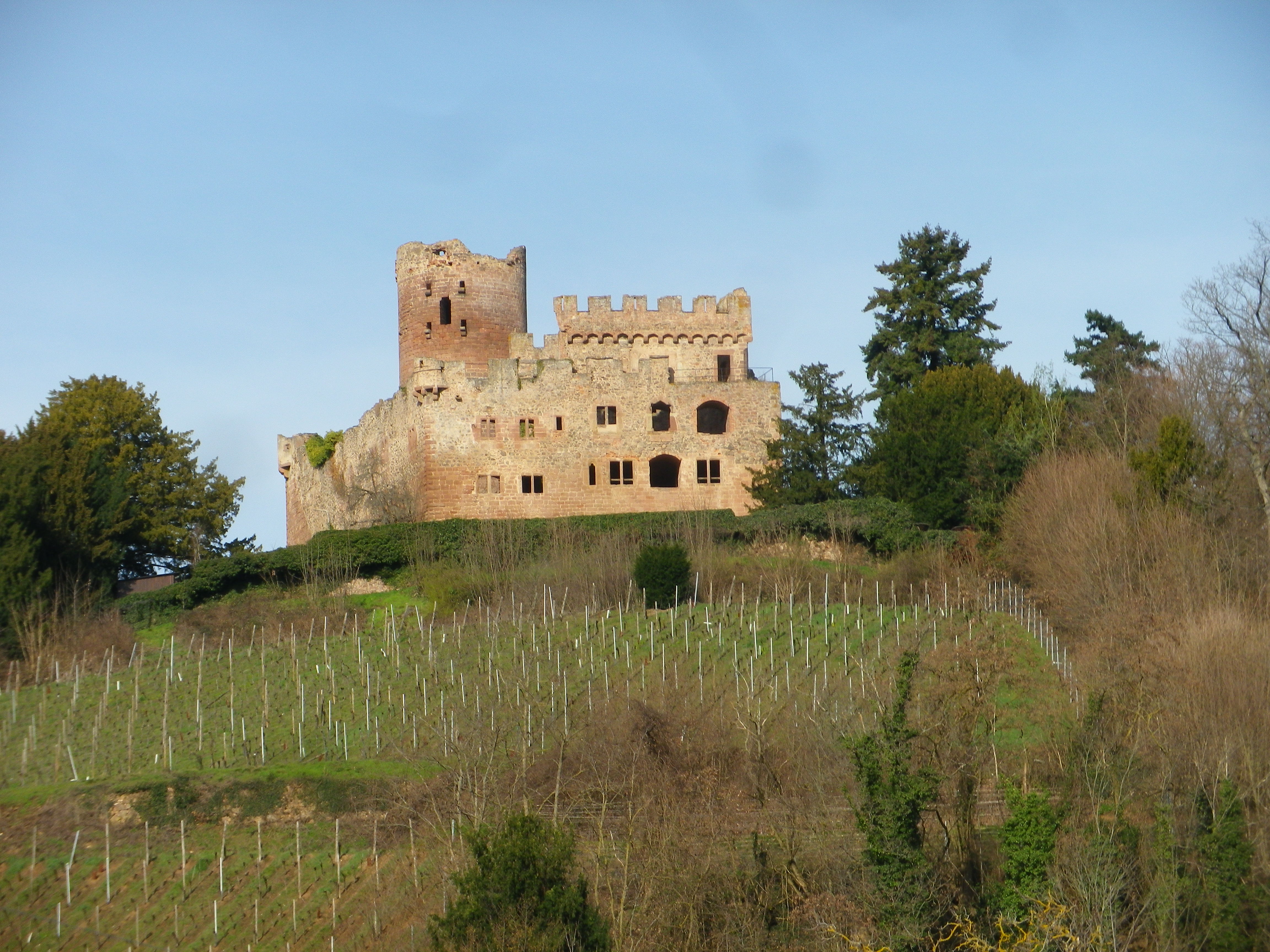
After a brief climb through a forested area, the vast expanse of the Rhine River plains, across to Germany’s Black Forest, came into view. The trail itinerary through the Praelatenberg was sufficiently high enough up the hill to provide great viewing, but low enough to be easily accessible to all, be it on bike or on foot.
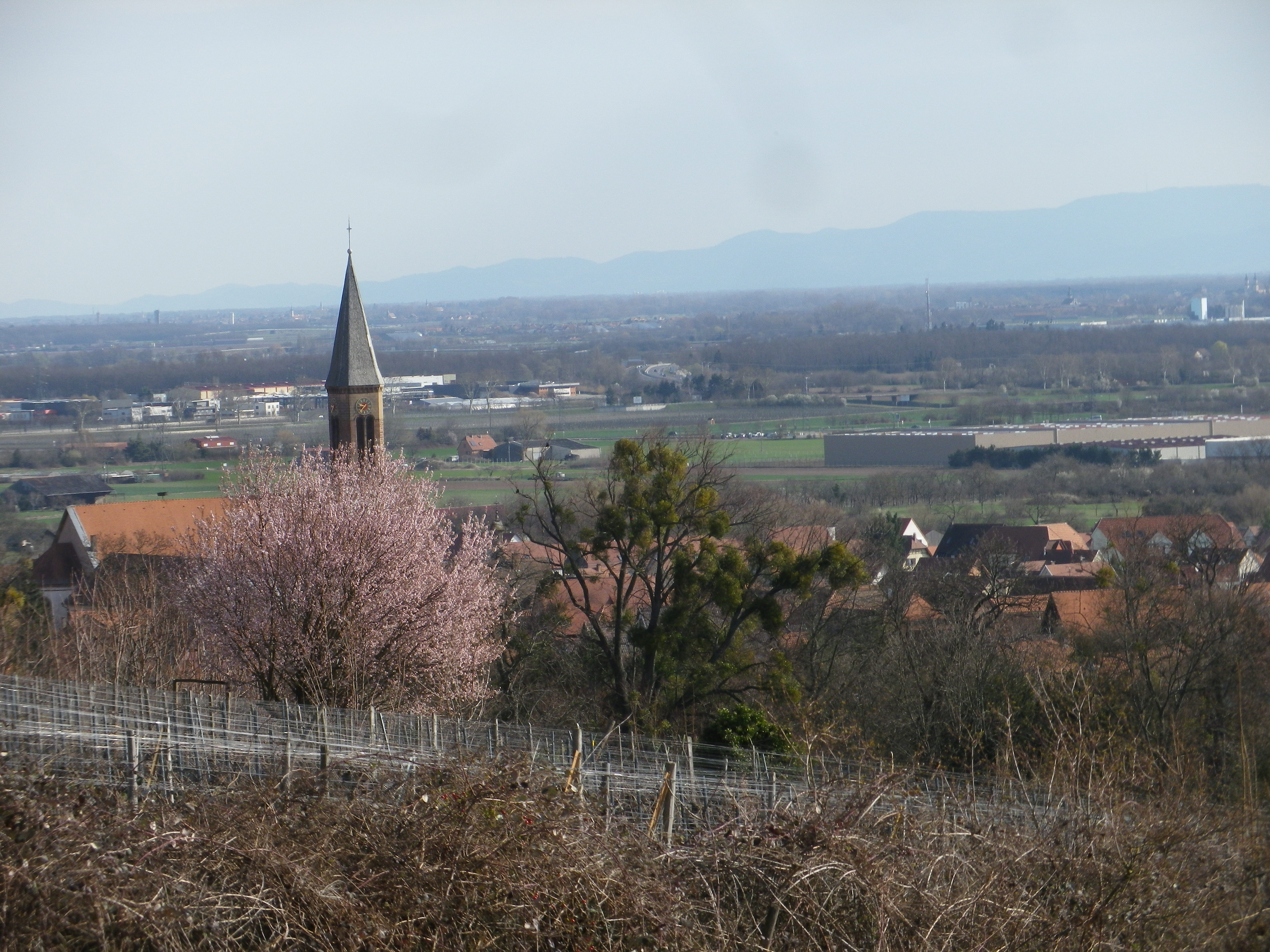
Even before entering Orschwiller village proper, the magnificent Castle of Haut Koenigsbourg really came into view. With its fascinating history, and 360-degree views, it is worth a visit (by hike, bike or car). It is one of the top attractions in Alsace. But I was on a mission, two kilometers away and several hundred meters below its formidable walls, so I turned downhill into the village.
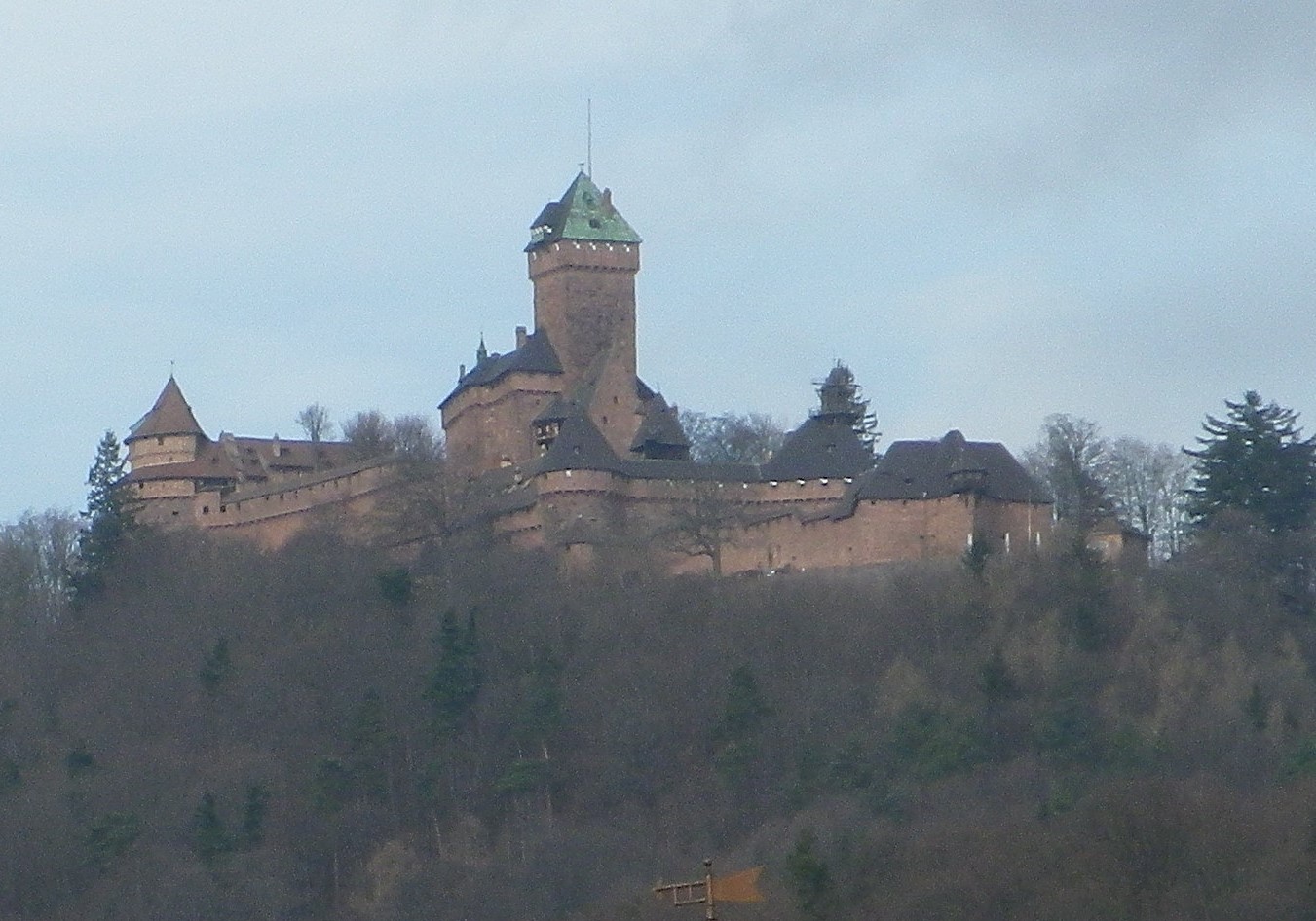
The Grand Rue (literally the Great Street) is an unusually wide one for the area. Austere and somber, this street connects the hillside vineyards with the less prestigious ones in the plains. Substantial house fronts, several of which belong to family run wineries, line the street on either side.
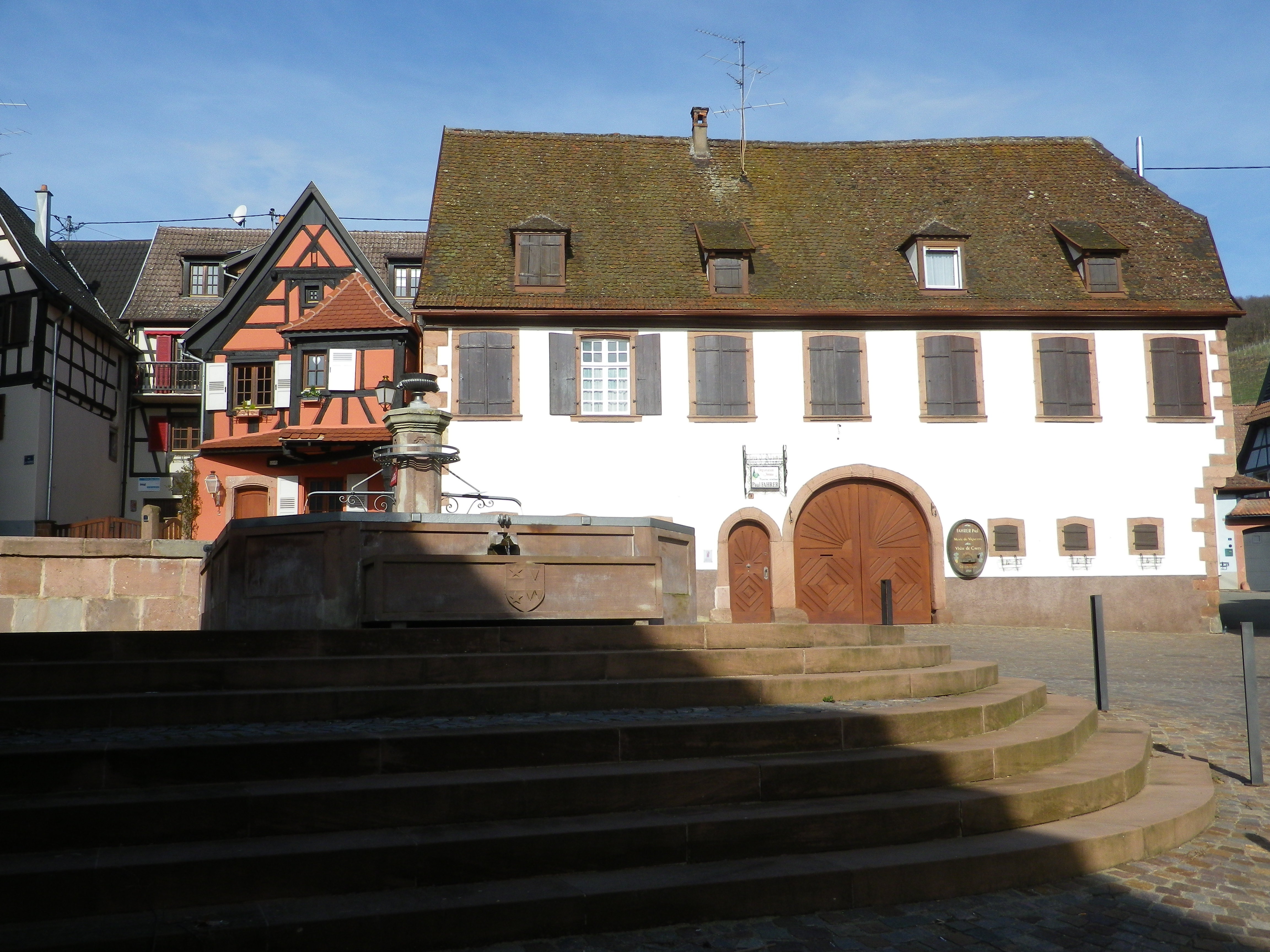
Once again on flat ground (great occasionally for bikers, not exactly thrilling for hikers), the itinerary led to a Roman mile marker. And here, looking north, and south, the path through the vineyards ran straight and true. I have focused on the medieval era here, but the Romans also had a large presence in this area. The Merovingians appropriated “Regis Villa” in Kintzheim, (as was the custom with other large, formerly Roman dwellings in their lands). It ultimately became known as Castle Kintzheim. Additionally, if Chatenois’ original name, Castinetum in Latin, didn’t tip you off, look at a map. The typical Roman rectangular design – a main street through the middle, with lanes running 90 degrees off it – is still somewhat discernable. I continued to Chatenois, which undoubtedly served during the Pax Romana as a station for shelter for travelers and collectors of tolls and duties.
Now Chatenois is a quaint wine village serving locals and visitors alike. The Praelatenberg and Frankstein vineyards once served medieval ecclesiastical and seigneurial interests, and its products were probably taxed by the Romans. But nowadays, anyone can buy good wines from these vineyards for reasonable prices, and enjoy them as has been done since Roman times here!
